
The following article by David Strange originally appeared in The Courier-Journal on 31 Jul 2013. It is archived here with additional information for your reading enjoyment.
Once upon a time in Bullitt County, there was a small community called Smithville.
Sadly, like so many such pastoral villages across America, Smithville is now but a memory, and that memory rapidly fading with time. Today, there are mostly trees and brush and widened road where the village once stood. In fact, most readers of this story have probably traveled through Smithville, and didn't even know anything more had ever been there.
Smithville was located on the north side of Salt River, where Bardstown Road (Highway 31E) makes its crossing a few miles south of Mt. Washington.
It was a nice little rural town, where children and families and even area teams would play baseball in the nearby corn fields after harvest. It had a post office (from at least 1873 to 1917), a general store, a blacksmith shop, and two mills. One of those mills was so large that it remained a landmark in the area for nearly a century after it closed, passing from casual sight just a few years ago, long after the town itself had disappeared.
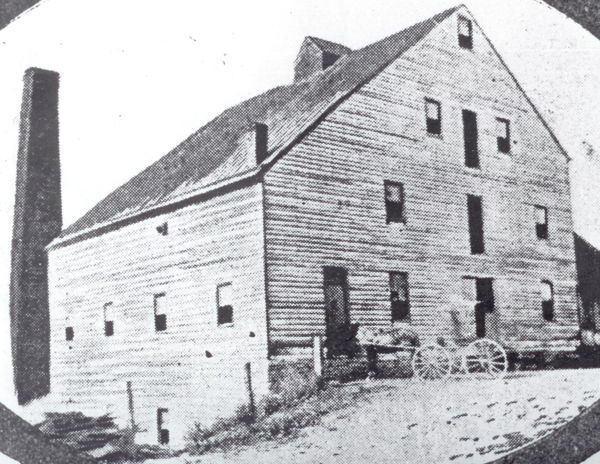
At several stories tall, the mill was indeed a big one. Some of the wood beams in it were fifty feet long and fourteen inches thick, all hand cut, probably from virgin timber, and put together with wooden pegs. About half of the old mill was taken down in 1959 because of deterioration. Workers commented at the time about how difficult it was to take down the enormous beams, and marveled how the first builders could have gotten them up into position to begin with.
The Smithsville mill apparently ground its last corn and wheat flour in 1917 when Clyde Troutman, Sr. bought the decaying building and started using the first floor (from the high side of the hill) as a feed barn for the hogs he raised and the second floor to store tobacco.
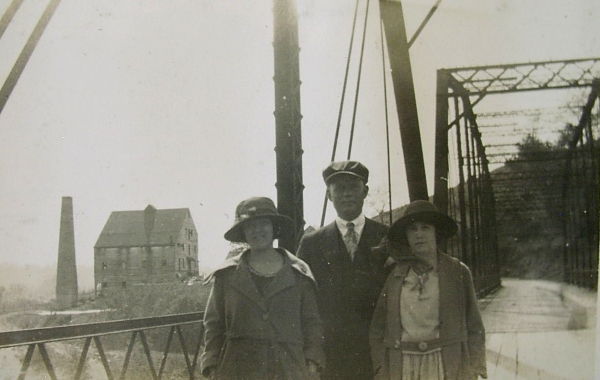
When the old mill was in its prime, it must have been a sight to see. Said to have first been powered by water, it was apparently converted to steam. The giant chimney, used for the steam power, once stood out on the horizon, but was taken down, probably in the 1940's or 50's, for fear of it falling. Clyde Troutman, Sr. used the original water wheel for a flower bed until it rotted away.
I do not have much information about the mill's, or the community's, original founding. My best guess so far is that the mill, at least the big Smithville Mill, was built well before 1859 and possibly a smaller one before that.
Ownership of the old mill and land was eventually passed from Clyde Troutman, Sr. to Clyde "Mac" Troutman, Jr., in 1970, and then in 1990 to Larry Joe Troutman, who owns it today. I have one note that seems to indicate Warren Troutman might have owned the mill as far back as 1898, when it was bought for $7,000. Ownership of the mill changed hands a few times before that.
But there was much more to the old town than the mill and other buildings.
There were people.
Mrs. Emma Mae Troutman Armstrong has told me several stories of when she lived at Smithville from her childhood until after she married in 1951. She is a daughter of Clyde, Sr. and I loved hearing her memories about life there.
When Emma Mae was a child, there was a teacher, Miss Dale Carrithers, who stayed at the house during the week in school season. Emma remembers "Miss Dale" would walk from there "through the bottoms and over the hill to Cedar Glade School, where she taught." That is quite a distance for a bird to fly; much more so for a poor teacher to have to walk.
And do you remember one of my previous stories that talked about turkeys being herded to Louisville? Well, Ms. Armstrong tells me that such turkey drives were done from Smithville by her father, along with Homer Barbour and Yerkee Miller.
One of Ms. Armstrong's sad memories is of the family home burning down in 1958, destroying much of the family's furniture. She remembers her father being particularly distressed at losing some of the family photographs, especially a large one of him as a young boy.
Yet there was an even worse tragedy in the Smithville area before Ms. Emma Mae Troutman Armstrong's time. In September, 1915, a terrible accident occurred that, to me, also symbolized the changing times.
Mrs. Aaron Cumley was driving in a horse-drawn buggy with her eight year old nephew, Sam Montgomery, and her six year old niece, Anna Montgomery. The horse was frightened by an automobile, bolted, and ran off a cliff into the Salt River.
Both children drowned, and Mrs. Cumley herself survived only due to a rescue by two men who happened to be on the river's edge near where she fell.
The children's mother, having just waved goodbye to them as they drove away, witnessed the entire horrible accident, changing, I am sure, the rest of her life.
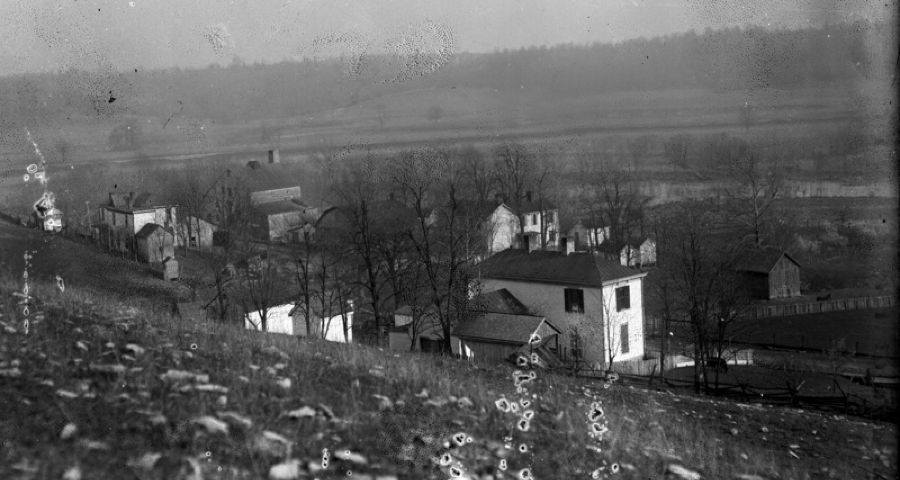
And so, coincidentally, the life of Smithville, like so many other small villages in America, was also changing about that time as well.
Industrialization and the onset of the automobile was rapidly changing society, and eliminating the "need" for small mills and small farm communities.
By 1917, Smithville was already beginning its decline, even if the people of Smithville did not yet know it. Houses and businesses would gradually fade away, today leaving only one or two homes and an occasional stone foundation where a town once stood. Bardstown Road, which ran through the town, was widened once, then twice, taking away even more of the remains, and an even larger road is being planned for the near future.
And so the small town of Smithville, faded from existence, merging almost imperceptibly into the trees and brush as cars rush across the Salt River Bridge.
But maybe now you will notice. Perhaps you will slow down just a bit as you drive south onto the bridge, noticing the cutaway hill on the left where a house once stood, and the telephone pole on the right where the Smithville post office thrived, and between there and the river where a mill towered into the air.
Pause just a bit, and remember a day when small-town America thrived and the town children would play baseball in the corn fields.
Many thanks to Mrs. Emma Mae Troutman Armstrong, and to Bobby Darnell for their stories and pictures that bring to life once more the little town of Smithville.
Additional Photos
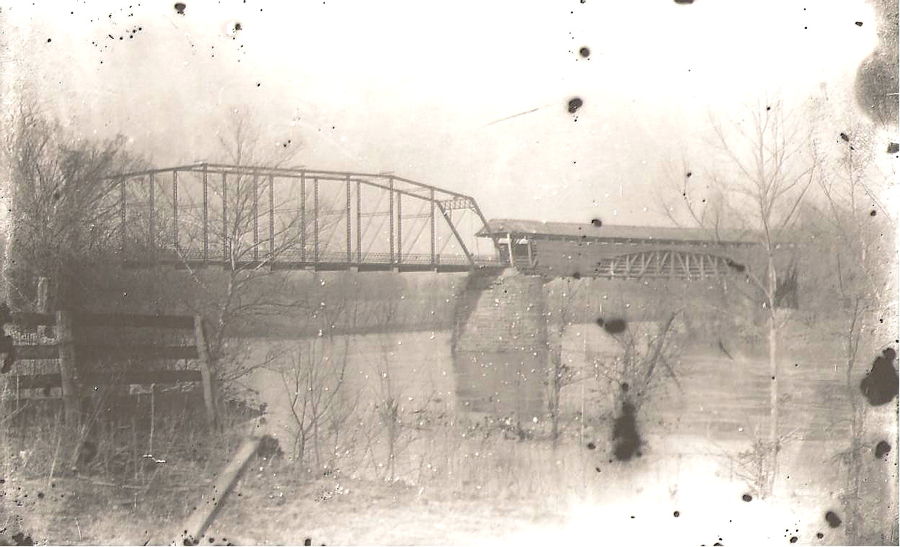
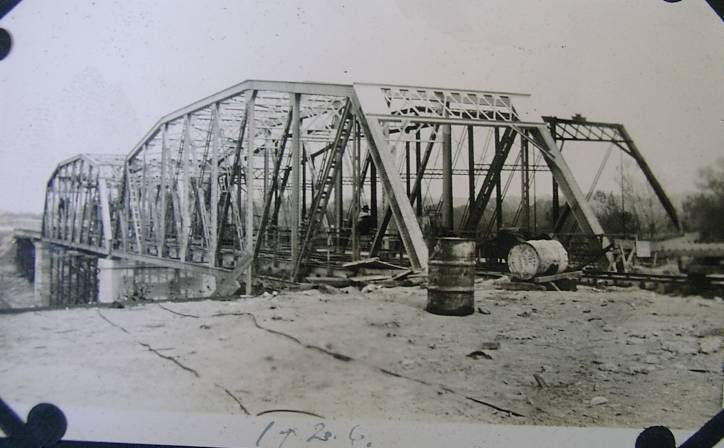
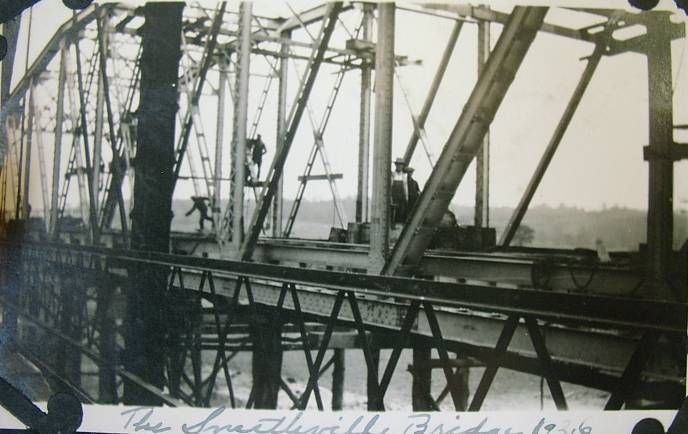
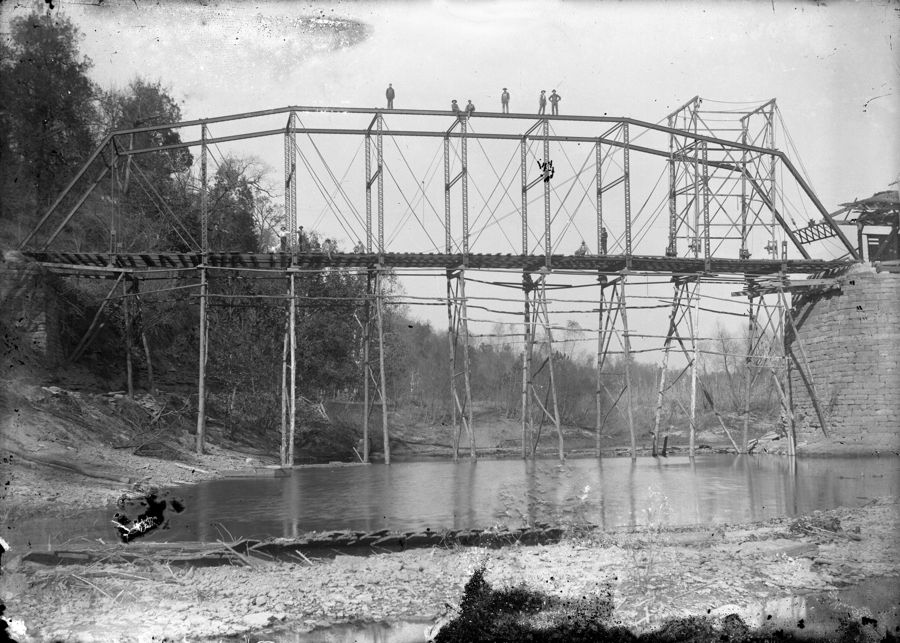
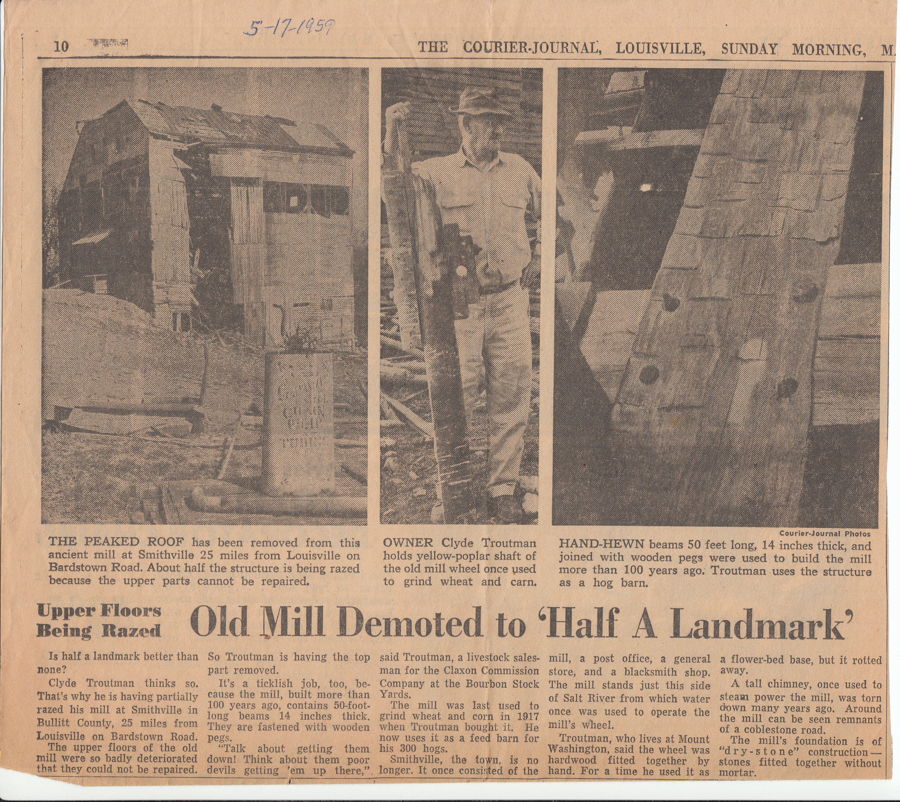
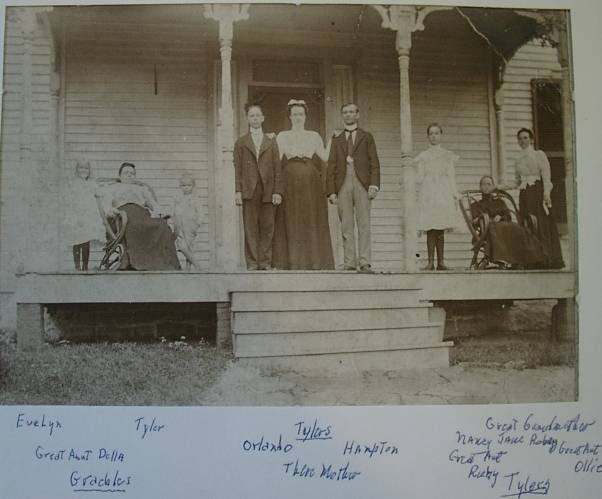
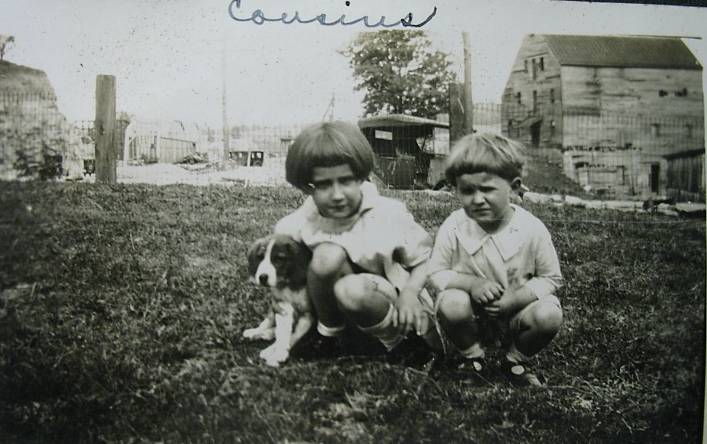
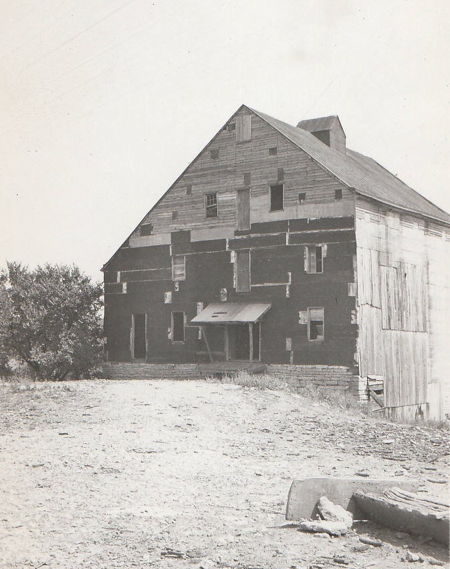
(Written on back of photo:) This is the old flour mill located by the Salt River Bridge on Hwy 31E. Located on the farm of Clyde F. Troutman, Sr. In 1970 at his death it was passed on to his son, Clyde F. Troutman, Jr. ("Mac"). At his death in 1990 it was passed to one of six boys, Larry Joe Troutman. As of September 2002, it still belonged to him.
Copyright 2013 by David Strange, Shepherdsville KY. All rights are reserved. No part of the content of this page may be included in any format in any place without the written permission of the copyright holder.
The Bullitt County History Museum, a service of the Bullitt County Genealogical Society, is located in the county courthouse at 300 South Buckman Street (Highway 61) in Shepherdsville, Kentucky. The museum, along with its research room, is open 10 a.m. to 4 p.m. Monday through Friday. Saturday appointments are available by calling 502-921-0161 during our regular weekday hours. Admission is free. The museum, as part of the Bullitt County Genealogical Society, is a 501(c)3 tax exempt organization and is classified as a 509(a)2 public charity. Contributions and bequests are deductible under section 2055, 2106, or 2522 of the Internal Revenue Code. Page last modified: 12 Sep 2024 . Page URL: bullittcountyhistory.org/memories/smithville.html